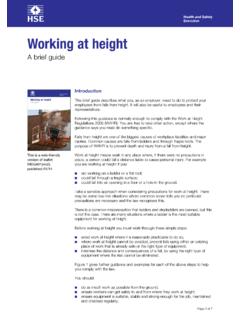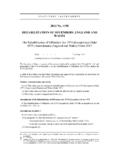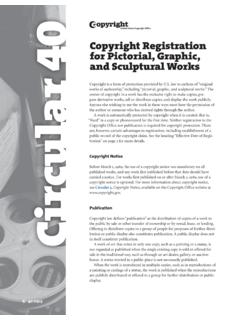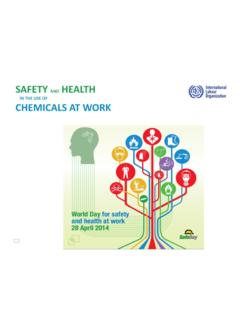Transcription of Queensland Child Protection Guide 2 - csyw.qld.gov.au
1 The Structured Decision Making System for Child Protection Services Queensland Child Protection Guide March 2019 Department of Child Safety, Youth and Women 2019 by NCCD, All Rights Reserved ACKNOWLEDGEMENTS This Queensland Child Protection Guide represents the contributions of many individuals whose efforts to develop, review and refine the following decision trees and their definitions are greatly appreciated. The Department of Child Safety, Youth and Women, an agency of the Queensland Government, is licenced to reproduce, install and display SDM materials for internal purposes. Any modification or addition must be approved by the National Council on Crime and Delinquency (NCCD). NCCD will then grant a licence to use such agreed-upon modifications or additions for internal purposes only.
2 2019 by NCCD, All Rights Reserved VERSION HISTORY 2019, February Wording change to question on neglect: nutrition tree for clarity. Modified path on universal tree 2 2019 by NCCD, All Rights Reserved TABLE OF CONTENTS PURPOSE .. 1 PROCEDURES .. 3 COMPLETION INSTRUCTIONS .. 4 SELECTING A DECISION TREE .. 12 Physical Harm .. 21 Neglect: Supervision .. 35 Neglect: Physical Shelter/Environment .. 41 Neglect: Nutrition .. 46 Neglect: Medical Care Registered Health Professionals .. 49 Neglect: Medical Care Non-Registered Health Professionals .. 55 Neglect: Mental Health .. 58 Neglect: Hygiene/Clothing .. 62 Sexual Abuse .. 67 Emotional/Psychological Harm .. 73 Child is a Danger to Self Or Others .. 78 Pregnant Woman Unborn Child .. 83 Parent Concern: Problematic Alcohol or Other Drug Use .. 89 Parent Concern: Mental Health.
3 93 Parent Concern: Intellectual or Cognitive Disability .. 97 Parent Concern: Domestic and Family Violence .. 101 Universal Tree 1 .. 108 Universal Tree 2 .. 111 Universal Tree 3 .. 113 GLOSSARY .. 117 REFERENCES .. 123 APPENDICES A. Supervision Levels B. Psychological Impact on Child The NCCD Children s Research Center is a nonprofit social research organisation and a centre of the National Council on Crime and Delinquency. Structured Decision Making and SDM are registered in the US Patent and Trademark Office. 1 2019 by NCCD, All Rights Reserved PURPOSE The Child Protection Guide (CPG) is an online decision-support tool designed to assist professionals with concerns about a Child s safety or well-being in making decisions regarding where to report or refer their concerns. The expanded use of the Guide in Queensland is part of the government s commitment to build stronger families and provide the right services at the right time to vulnerable families.
4 The decision to report Child Protection concerns is not an easy one, and the consequences of the decision are considerable. The CPG was co-designed by multiple government departments and non-government agencies to ensure that reporting obligations are met and serious concerns are reported to Child Safety Regional Intake Service (CS-RIS) promptly, whilst also enabling families facing less serious concerns to access support services without unnecessary statutory intervention. The CPG supports professionals to make these decisions by: Focusing on the critical factors for decision making; Clearly identifying the threshold for concerns that require a report to CS-RIS; Operationalising the legislation to ensure reporting obligations are met; Identifying alternative and additional ways to support a family where the concerns do not meet this threshold; Providing details of available local support services; Providing a consistent and objective framework for analysing concerns; and Promoting shared principles, language and thresholds across the system.
5 This CPG is intended to complement not replace professional judgment, expertise and critical thinking. The Guide should be applied within the professional s agency s policies and procedures for managing Child Protection concerns where they exist. The outcome of the CPG does not prevent a professional reporter from any course of action the reporter believes is appropriate. Finally, this Guide is a dynamic document. Continual evaluation and feedback will be used to refine this manual over time. Working Across Difference Workers engage with families, children and communities whose ethnicity, economic status, age, gender, culture, religion, spirituality, sexual orientation and upbringing may differ greatly from their own. Intrinsically, people are influenced by personal experiences and therefore can be biased when assessing others who differ from themselves.
6 2 2019 by NCCD, All Rights Reserved Considerations Regarding Aboriginal or Torres Strait Islander Children and Families Throughout the document, there are references to Aboriginal or Torres Strait Islander Child -rearing practices. These practices are derived from a body of cultural knowledge specific to Aboriginal or Torres Strait Islander persons and are defined as incorporating the following. Independence Responsibility of children at an earlier age Cultural authority (within kinship/clan groups) Cultural responsibility (passing on of knowledge or skills) Aboriginal and Torres Strait Islander societal structures have been changed and influenced from the colonisation of Australia through to the present day. The majority of Aboriginal and Torres Strait Islander peoples have been directly or indirectly affected by past Federal and State government policies and interventions.
7 These interventions have contributed to a breakdown in knowledge of Child -rearing practices, supportive family kinship and community structures and guidance offered by traditional laws. The influence of past government interventions and policies must be considered holistically when considering Child Protection concerns. When working with Aboriginal and Torres Strait Islander individuals, it is important to seek to understand strengths of their unique parenting practices and kinship structures, the strengths of community caring, collective decision making and network capabilities surrounding the Child and family. Cultural connection is a strong protective factor for keeping children safe within their families, significantly influencing their identity and providing a sense of belonging that will contribute to the Child s safety and well-being.
8 The cultural commentary used throughout this Guide is learned communal knowledge obtained from the historical and contemporary experience and personal history of Aboriginal or Torres Strait Islander peoples. 3 2019 by NCCD, All Rights Reserved PROCEDURES WHICH CHILDREN All persons under age 18 whom you encounter in the course of your professional duties. WHO Professionals who encounter concerns related to possible abuse or neglect of children. This includes mandatory and non-mandatory reporters. WHEN TO USE THIS Guide When you become concerned that a Child you encounter in the course of your professional duties may be abused or neglected by a parent or adult household member. If a Child may be harmed by someone who is not a parent or household member or who is a Child in the household, do the following. Notify police if appropriate.
9 If concerned about whether a parent is protecting Child from the person causing harm, turn to the Neglect: Supervision decision tree. If concerned about whether a parent is providing medical or mental health care needed by Child as a result of being harmed, turn to the Neglect: Medical or Neglect: Mental Health decision tree. DECISIONS Each path through a decision tree leads to a decision point as described below. Report to CS-RIS. Refer to voluntary prevention resource. Family and Child Connect (FaCC) Intensive Family Support (IFS) services Aboriginal and Torres Strait Islander Family Wellbeing Service (ATSIFWS) Report or referral not required. NOTE: When a report or referral to voluntary prevention services is not required, referrals may be made, with family consent, for other resources. See completion instructions for further detail.
10 4 2019 by NCCD, All Rights Reserved COMPLETION INSTRUCTIONS URGENT CONCERNS If a Child has a serious illness or injury requiring immediate medical attention, OR a crime has just been or is about to be committed, OR a Child has just caused or is about to cause serious harm to self or others, first call 000 and ask for the appropriate service to respond to the emergency. NOTE: At any time whilst completing a decision tree, you are encouraged to consult with the Child Protection advice area within your agency if you have access to one. For example, if you work for Queensland Health (QH), this would be your Child Protection Liaison Officer. If you work for Queensland Police Service (QPS), this would be your Child Protection and Investigation Unit. If you work with the Department of Education (DoE), this would be your guidance officer/senior guidance officer or Principal Advisor Student Protection .







